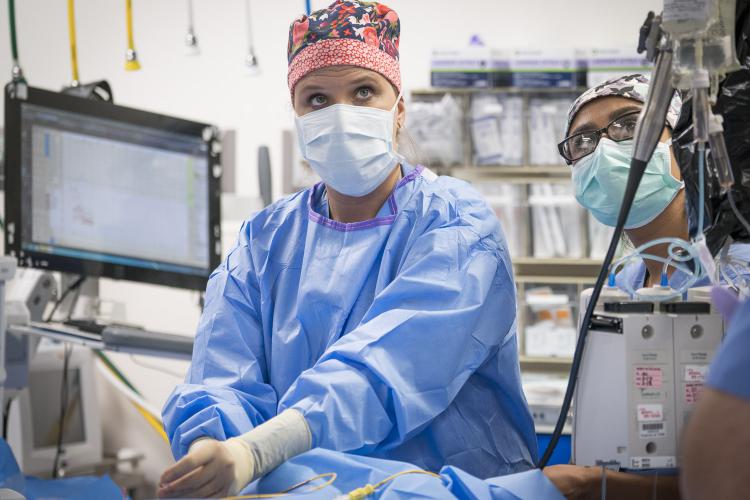
A simple solution has produced amazing results, helping JPS Health Network make sure a higher percentage of surgeries start on time.
A whiteboard was placed six months ago outside the JPS Health Network surgical suite to keep track of when operations start, noting with emoji faces if the first procedure of the day in each of JPS’s operating rooms starts promptly. A happy face is posted if it does. Something unhappier is posted – along with a note about why the start was late – if the operation doesn’t begin promptly.
“It sounds like a silly little thing,” said Deb Saunders, Executive Director of Perioperative Services at JPS. “But it has created some competition among the surgical teams because everyone wants to make sure they’re on the happy list. No one wants their colleagues to walk by the board and see they were to blame for making their team late.”
Dr. G. Robert Stephenson, Vice Chief of Surgery for Quality, Safety and Patient Experience, said the board has been more effective than he ever imagined it could be. He said fewer than 25 percent of operations started on time before the board was put up. Now, about 50 percent start on time on a consistent basis.
“We’ve tried a lot of things to improve the percentage of on-time surgeries but nothing really moved the needle before this,” Stephenson said. “It just goes to show that you don’t need expensive incentives or elaborate programs to make things happen. This simple little thing was able to help us get buy in from the teams and created some friendly competition among them.”
Not only are fewer surgeries running behind, the ones that are tardy are less late than they used to be, according to Saunders.
“These days, if an operation starts one or two minutes late, that’s a big deal,” Saunders said. “It used to be that 30 minutes was no big deal.”
The positive trend continues its upward path and Stephenson said he’s hopeful that on-time surgeries will occur 60, 70 or even 80 percent of the time in the near future. One of the primary reasons operations start late is because a surgery team member either arrives late or isn’t ready to start at the scheduled time. But that’s not always the case.
“Sometimes surgeries start a few minutes late because the patient is nervous and has a lot of questions or because a member of the surgical team notices a concern that must be addressed before we can get started,” Stephenson said. “So, it’s not our goal to make it to 100 percent. Our primary concern is always the patient’s safety. We’re always going to make time for those kinds of things because it’s the right thing to do.”
Why is it important for surgery to start on time?
There are many reasons. First, patients become impatient quickly when their nervousness about having an operation is aggravated by a lengthy wait – especially when they’ve been unable to eat since the day before in preparation for surgery, according to Dr. Rajesh Gandhi, Medical Director of Trauma Services at JPS.
“When people have to wait and they don’t know why they’re waiting, it gives them more time to worry,” said Gandhi. “It’s important we’re on time whenever possible. When we can’t be on time, we should communicate with the patient and their family to make sure they understand why we’re behind and what they can expect.”
Second, running the surgical suite is one of the most expensive parts of a hospital. Reducing down time in the OR is key to making it run as cost effectively as possible, Gandhi said. It’s an important part of responsible stewardship of health network resources.
In addition to the whiteboard and emojis, Gandhi said some of the credit for making the operating rooms run on time is owed to the adoption of a pre-op huddle before surgery cases. Originally developed as a way to increase patient and physician communication as well as better outcomes for the patient, the adoption of a pre-op huddle of surgical staff has been an important tool used to help everything come together in a timely manner, Gandhi said.
Before the huddle, Gandhi said doctors, nurses and other team members visited with the patient one by one prior to an operation, a lengthy process that was lengthened even more if any of the participants was late. Today, the huddle allows the entire surgery team to meet with patients at the same time, making what was a prolonged process more efficient and practical.
“These things that used to happen one after the other are now happening at the same time,” Gandhi said. “Not only is it more efficient, but when the patient is able to talk to everyone at the same time, their concerns can all be addressed and they know the members of their surgical team are all on the same page.”
Saunders said it’s inspiring to see surgical teams push to find ways to constantly get better.
“Patients don’t notice when things go right,” Saunders said. “But they shouldn’t notice because that’s what they should expect.”
